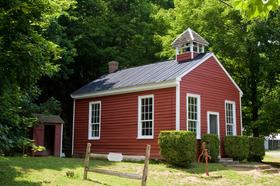For the 2025 school year, there are 3 public schools serving 714 students in Shadyside Local School District. This district's average testing ranking is 8/10, which is in the top 30% of public schools in Ohio.
ÎÛÎÛÂþ» Schools in Shadyside Local School District have an average math proficiency score of 64% (versus the Ohio public school average of 52%), and reading proficiency score of 72% (versus the 60% statewide average).
Minority enrollment is 6% of the student body (majority Hispanic), which is less than the Ohio public school average of 34% (majority Black).
Overview
This School District
This State (OH)
# Schools
3 Schools
3,572 Schools
# Students
714 Students
1,670,552 Students
# Teachers
45 Teachers
96,800 Teachers
Student : Teacher Ratio
16:1
16:1
Student By Grade
District Rank
Shadyside Local School District, which is ranked within the top 30% of all 918 school districts in Ohio (based off of combined math and reading proficiency testing data) for the 2021-2022 school year.
The school district's graduation rate of 85-89% has decreased from 90-94% over five school years.
Overall District Rank
#222 out of 929 school districts
(Top 30%)
(Top 30%)
Math Test Scores (% Proficient)
63%
52%
Reading/Language Arts Test Scores (% Proficient)
71%
60%
Science Test Scores (% Proficient)
70-74%
63%
Graduation Rate
85-89%
86%
Students by Ethnicity:
Diversity Score
0.11
0.53
% American Indian
n/a
n/a
% Asian
1%
3%
% Hispanic
3%
8%
% Black
n/a
17%
% White
94%
66%
% Hawaiian
n/a
n/a
% Two or more races
2%
6%
All Ethnic Groups
District Revenue and Spending
The revenue/student of $13,437 in this school district is less than the state median of $17,287. The school district revenue/student has stayed relatively flat over four school years.
The school district's spending/student of $12,339 is less than the state median of $17,235. The school district spending/student has stayed relatively flat over four school years.
Total Revenue
$10 MM
$28,879 MM
Spending
$9 MM
$28,792 MM
Revenue / Student
$13,437
$17,287
Spending / Student
$12,339
$17,235
Best Shadyside Local School District ÎÛÎÛÂþ» Schools (2025)
School
(Math and Reading Proficiency)
(Math and Reading Proficiency)
Location
Grades
Students
Rank: #11.
Leona Ave Middle School
(Math: 75% | Reading: 81%)
Rank:
Rank:
9/
Top 20%10
3795 Leona Ave
Shadyside, OH 43947
(740) 676-9220
Shadyside, OH 43947
(740) 676-9220
Grades: 3-6
| 184 students
Rank: #22.
Jefferson Ave Elementary School
(Math: ≥90% | Reading: ≥90% )
Rank:
Rank:
8/
Top 30%10
4895 Jefferson Ave
Shadyside, OH 43947
(740) 676-9669
Shadyside, OH 43947
(740) 676-9669
Grades: PK-2
| 234 students
Rank: #33.
Shadyside High School
(Math: 50-54% | Reading: 60-64%)
Rank:
Rank:
6/
Top 50%10
3890 Lincoln Ave
Shadyside, OH 43947
(740) 676-3235
Shadyside, OH 43947
(740) 676-3235
Grades: 7-12
| 296 students
Frequently Asked Questions
How many schools belong to Shadyside Local School District?
Shadyside Local School District manages 3 public schools serving 714 students.
What is the rank of Shadyside Local School District?
Shadyside Local School District is ranked #209 out of 918 school districts in Ohio (top 30%) based off of combined math and reading proficiency testing data for the 2021-2022 school year.
What is the racial composition of students in Shadyside Local School District?
94% of Shadyside Local School District students are White, 3% of students are Hispanic, 2% of students are Two or more races, and 1% of students are Asian.
What is the student/teacher ratio of Shadyside Local School District?
Shadyside Local School District has a student/teacher ratio of 16:1, which is lower than the Ohio state average of 17:1.
What is Shadyside Local School District's spending/student ratio?
The school district's spending/student of $12,339 is less than the state median of $17,235. The school district spending/student has stayed relatively flat over four school years.
Recent Articles

Segregation in K-12 Education: Colonial Era
Explore the origins of educational segregation during the colonial era and the differential treatment of Native American, African American, and white students. This article delves into the historical context, policies, and societal attitudes that shaped early education in colonial America, highlighting the disparities and injustices that persisted within the schooling systems of that time.

2011 Classroom Size Update: Are Classes Still Growing Larger?
Since the recession, public school classrooms have seen major budget cuts - and many increases in class sizes. How is the situation in 2011? Read this article to find out.

Will Single Sex Classrooms Save ÎÛÎÛÂþ» Schools?
Learn about the benefits of single sex classrooms and why public schools are hoping this type of classroom will save the American school system.





